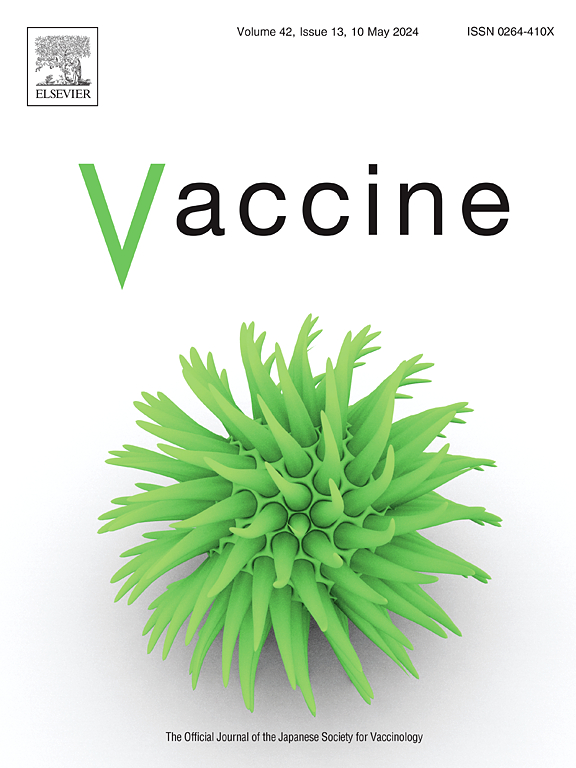中国40岁及以上成年人带状疱疹疫苗接种覆盖率及其相关因素:一项基于人群的调查
IF 4.5
3区 医学
Q2 IMMUNOLOGY
引用次数: 0
摘要
目的:带状疱疹(HZ)是中国一个重要的公共卫生问题,特别是在人口老龄化和发病率不断上升的背景下。虽然疫苗接种可以有效预防HZ及其并发症,但中国关于HZ疫苗(HZV)覆盖率和相关因素的国家数据有限。方法我们在中国大陆25个省份开展了一项全国性调查,包括14315名40岁以上的参与者,以估计40岁及以上成年人的HZV摄取及其相关因素。多变量逻辑回归用于评估与疫苗接种相关的特征,我们分析了疫苗类型和剂量完成率。结果HZV吸收率为0.79%。受过中学教育和家庭收入较高的人更有可能接种疫苗。大多数接种者接种的是带状疱疹活疫苗(ZVL),而不是重组带状疱疹疫苗(RZV),近一半的人接种了两剂。结论中国甲型h1n1流感病毒覆盖率较低,需要制定有针对性的公共卫生战略,提高疫苗可及性和认知度,特别是在高危人群中,以减少甲型h1n1流感病毒相关负担。本文章由计算机程序翻译,如有差异,请以英文原文为准。
Herpes zoster vaccination coverage and factors associated among adults aged 40 and older in China: A population-based survey
Objectives
Herpes zoster (HZ) is a significant public health issue in China, especially with an aging population and rising incidence. While vaccination effectively prevents HZ and its complications, national data on HZ vaccine (HZV) coverage and associated factors in China are limited.
Methods
We conducted a nationwide survey across 25 provinces in mainland China, including 14,315 participants aged over 40 years, to estimate HZV uptake and associated factors among adults aged 40 years and older. Multivariate logistic regression was used to assess characteristics linked to vaccination, and we analysed vaccine types and dose completion rates.
Results
The HZV uptake rate was 0.79 %. Vaccination was more likely among individuals with middle school education and higher household income. Most vaccinated individuals received the zoster vaccine live (ZVL) rather than the recombinant zoster vaccine (RZV), and nearly half completed two doses.
Conclusions
HZV coverage in China is low, underscoring the need for targeted public health strategies to improve vaccine accessibility and awareness, particularly among at-risk groups, to reduce HZ-related burdens.
求助全文
通过发布文献求助,成功后即可免费获取论文全文。
去求助
来源期刊

Vaccine
医学-免疫学
CiteScore
8.70
自引率
5.50%
发文量
992
审稿时长
131 days
期刊介绍:
Vaccine is unique in publishing the highest quality science across all disciplines relevant to the field of vaccinology - all original article submissions across basic and clinical research, vaccine manufacturing, history, public policy, behavioral science and ethics, social sciences, safety, and many other related areas are welcomed. The submission categories as given in the Guide for Authors indicate where we receive the most papers. Papers outside these major areas are also welcome and authors are encouraged to contact us with specific questions.
 求助内容:
求助内容: 应助结果提醒方式:
应助结果提醒方式:


